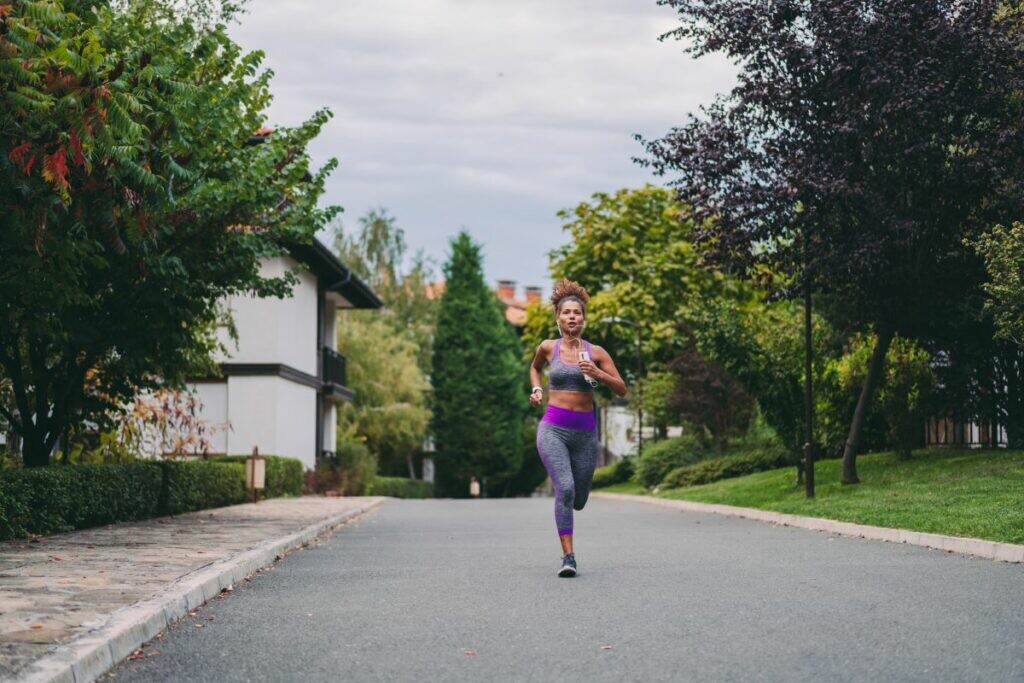Running News Daily
Running News Daily is edited by Bob Anderson. Send your news items to bob@mybestruns.com Advertising opportunities available. Train the Kenyan Way at KATA Kenya and Portugal owned and operated by Bob Anderson. Be sure to catch our movie A Long Run the movie KATA Running Camps and KATA Potato Farms - 31 now open in Kenya! https://kata.ke/
Index to Daily Posts · Sign Up For Updates · Run The World Feed
Three ways to bounce back from sluggish legs
Most of us have felt like our legs were zapped during a tough training session–no bounce, no explosive power, lethargy… Performance coach and author Steve Magness calls this feeling “flatness” and describes it as when you lose pop or responsiveness. There are a few simple things you can do to boost recovery from this sensation and have your legs full of zest to pound out that next speed session.
“Flatness occurs when our muscle tension is off, ” explained Magness in a recent social media post. “Think of a rubber band,” he said. “If the rubber band is stretched and worn out, then if you pull it back, it won’t go far. It lacks tension.” Contrary to popular belief, flatness isn’t a result of too many tough, fast-paced sessions–it’s thought to be caused by a high volume of slower sessions. Magness suggests increasing muscle tension with responsive/reactive work to bounce back, including hops, hill sprints and strides. Add these drills to your regular workouts to gain speed and reaction time, without getting overly fatigued.
Strides

Strides can be a great way to remind your legs what it’s like to go fast. Make sure you do them on legs that are warmed up, like at the end of an easy run. Each stride should last 20-30 seconds.
Start at a slow jog, gradually accelerating over the first few steps.

Reach your maximum sprinting effort for the middle portion of the stride.
Slow down gradually over the last few steps until you come to a stop, and focus on maintaining good form throughout the stride.
Walk or jog slowly for one to two minutes between strides to allow your heart rate to come down and your muscles to recover.
Aim to include four to eight strides in your workout, increasing the number depending on your fitness or race goals.
Hops
Adding some hops to your workout can boost running strength, power and co-ordination. As with any drill, make sure you are warmed up beforehand, or slot these at the end of an easy run. Focus on using your calf muscles and ankles to generate power, and keep them low and controlled–you aren’t aiming to leap high. Work on keeping core muscles engaged and chest lifted, and practise landing softly.
Basic forward hops
Stand with your feet hip-width apart and your arms relaxed at your sides, and bend your knees slightly to initiate the hop.
Push off with your toes, propelling yourself forward. As you push off, swing your arms forward and upward to help with upward motion. Aim to land softly and gently on the balls of your feet, keeping those knees slightly bent.
Go straight into the next hop, striving to be as fluid as possible. Aim for two or three sets of 10-15 hops in each direction or variation.
Switch it up with lateral hops (to the side) to improve stability and agility. Try single-leg hops, to work on single-leg strength and balance. Switch legs after a set of repetitions.
Hill sprints
There are a variety of ways to run hill sprints, but we suggest starting with the basics. Find a moderate incline that you can charge up for 15-20 seconds. Make sure that you are warmed up, and if possible, have the hill sprints themselves be your workout, rather than tacking them on to the end of a workout, since they are quite demanding.
Start at the bottom of the hill and sprint up for about 20 seconds. Pump your arms powerfully and naturally, as you would during flat sprints, and take quick, powerful strides while driving your knees forward.
After each sprint, walk or jog slowly back down the hill to recover–your recovery should be active, but not rushed. Strive for a 1:3 to 1:4 work-to-rest ratio, meaning if your sprint lasts 15 seconds, your recovery should be 45-60 seconds.
Start with four to six repeats, and as you become more experienced, experiment with different intensities on the same hill, or add more repeats.
After a hill sprint workout, make sure to take an easy running or recovery day.
by Keeley Milne
Login to leave a comment




